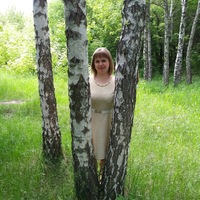Кто-нибудь знает законы физики? Нужна помощь!
Уезжаем на две недели, решил сделать капельную систему полива цветов. Взял таз, опустил туда верёвочки, перекинул их через борт в бутылки. Вода потекла по ним и стала капать. Рядом поставил камеру, которая ловит и фиксирует момент падения капли, считает время между двумя каплями.
Построил график. По оси X - время в часах от сегодняшней полуночи. По оси Y - время в секундах между каплями. Записывать начал вчера в 8 вечера. Всю ночь скорость капания падала. В 9:30 внезапно начала расти, потом на час стабилизировалась и опять начала падать.
После предыдущих экспериментов у меня была очевидная гипотеза, что капает медленнее из-за того, что уровень воды в сосуде опускается и воде надо всё больше и больше подниматься вверх по верёвке. Поэтому взял таз с большой площадью, за время эксперимента уровень воды в нём упал примерно на 2 мм, это не может сильно влиять.
Солнце вышло примерно в 8:30 (где разрыв на графике), стало освещать и греть систему. Влажность воздуха я не измеряю, но вроде скакать не должна.
Почему постоянно растёт время между каплями? От чего оно вообще может зависеть? Уровень воды в тазе, считай, не меняется. Какой-то вменяемой зависимости от температуры я не выявил =/
Уезжаем на две недели, решил сделать капельную систему полива цветов. Взял таз, опустил туда верёвочки, перекинул их через борт в бутылки. Вода потекла по ним и стала капать. Рядом поставил камеру, которая ловит и фиксирует момент падения капли, считает время между двумя каплями.
Построил график. По оси X - время в часах от сегодняшней полуночи. По оси Y - время в секундах между каплями. Записывать начал вчера в 8 вечера. Всю ночь скорость капания падала. В 9:30 внезапно начала расти, потом на час стабилизировалась и опять начала падать.
После предыдущих экспериментов у меня была очевидная гипотеза, что капает медленнее из-за того, что уровень воды в сосуде опускается и воде надо всё больше и больше подниматься вверх по верёвке. Поэтому взял таз с большой площадью, за время эксперимента уровень воды в нём упал примерно на 2 мм, это не может сильно влиять.
Солнце вышло примерно в 8:30 (где разрыв на графике), стало освещать и греть систему. Влажность воздуха я не измеряю, но вроде скакать не должна.
Почему постоянно растёт время между каплями? От чего оно вообще может зависеть? Уровень воды в тазе, считай, не меняется. Какой-то вменяемой зависимости от температуры я не выявил =/
Does anyone know the laws of physics? Help is needed!
We are leaving for two weeks, I decided to make a drip irrigation system for flowers. He took the basin, lowered the strings there, threw them over the side into the bottles. Water flowed over them and began to drip. I put a camera next to it, which catches and records the moment the drop falls, counts the time between two drops.
I built a graph. The X-axis is the time in hours from midnight today. Y-axis - time in seconds between drops. I started recording yesterday at 8 pm. Throughout the night, the dripping rate dropped. At 9:30, it suddenly began to grow, then stabilized for an hour and began to fall again.
After previous experiments, I had an obvious hypothesis that it drips more slowly due to the fact that the water level in the vessel drops and the water needs to rise more and more up the rope. Therefore, I took a basin with a large area, during the experiment, the water level in it dropped by about 2 mm, this cannot greatly affect.
The sun came out at about 8:30 am (where the gap is on the chart), it began to illuminate and warm the system. I do not measure the air humidity, but it seems that I should not jump.
Why is the time between drops constantly growing? What can it depend on at all? The water level in the basin does not change. I did not find any sane dependence on temperature = /
We are leaving for two weeks, I decided to make a drip irrigation system for flowers. He took the basin, lowered the strings there, threw them over the side into the bottles. Water flowed over them and began to drip. I put a camera next to it, which catches and records the moment the drop falls, counts the time between two drops.
I built a graph. The X-axis is the time in hours from midnight today. Y-axis - time in seconds between drops. I started recording yesterday at 8 pm. Throughout the night, the dripping rate dropped. At 9:30, it suddenly began to grow, then stabilized for an hour and began to fall again.
After previous experiments, I had an obvious hypothesis that it drips more slowly due to the fact that the water level in the vessel drops and the water needs to rise more and more up the rope. Therefore, I took a basin with a large area, during the experiment, the water level in it dropped by about 2 mm, this cannot greatly affect.
The sun came out at about 8:30 am (where the gap is on the chart), it began to illuminate and warm the system. I do not measure the air humidity, but it seems that I should not jump.
Why is the time between drops constantly growing? What can it depend on at all? The water level in the basin does not change. I did not find any sane dependence on temperature = /


У записи 32 лайков,
3 репостов,
1922 просмотров.
3 репостов,
1922 просмотров.
Эту запись оставил(а) на своей стене Антон Громов

















































